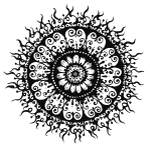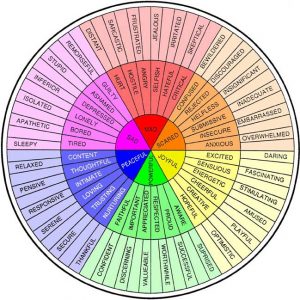When your nervous system is in a state of high stress, your sympathetic nervous system – the fight-flight-freeze state – is engaged. When this happens, it is very difficult feel connected in your body. In other words, you are not embodied or present.
How does this show up physically?
- can’t sit still / can’t stop moving
- lots of “nervous energy”
- no clear action or direction in your movements
- cannot bear to be touched / “touched-out”
- short / shallow breaths
How does this show up as behaviours?
- yelling/ snapping
- repetitive movements – picking at skin, biting nails
- avoidance behaviours / procrastination
How does this show up mentally?
- irrational thoughts
- “doom-and-gloom”
- catastrophising
- focused on negatives
So when you feel dis-connected in your own body, how can you be connected to your EMOTIONS? Often when I ask clients who are in a state of high stress, they are unable to name how they are feeling.
And when you can’t connect with your emotions, how then can you connect with other people, or things you love doing? In a state of high stress, it is impossible for your nervous system to recognise what “gratitude”, or “joy” or “love” feels like.
That’s why all those positivity approaches – affirmations and “think positively” and “love and Light” feels annoying AF! And your usual self-care strategies have stopped working.
This is when small steps working with calming your nervous system is important. Small steps are better than big shifts when it comes to nervous system regulation. So if you are finding it difficult to sit still, a 30-minute long recorded meditation would feel painful to your nervous system. Do some breathing exercises for 1 minute instead. If running a bath and sitting in it is too hard, get a laundry bucket and add some Epsom salts and do a foot-soak. If organising a catch-up with a friend is too hard with busy schedules, connect with a short message.
Here is a list I wrote of 22 x 1-minute activities for relieving stress: One-Minute Stress Busters – How to quickly disengage the fight-flight system
Most of all, when you are in a high state of stress, pushing yourself to do more, even more “self-care activities”, can be counter-productive. So aiming to be kind to yourself will help your nervous system – small steps in short time frames, and less is more, is good. If you pick just ONE one-minute stress buster to use in one week, that is kind and helpful for your nervous system. And in that kindness to yourself, you will begin re-connecting with yourself.



